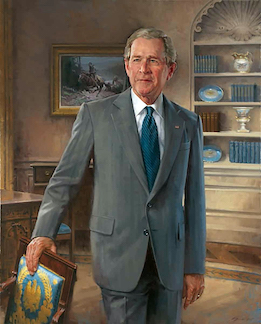Bushed Campaign 2004 T-Shirt

When the final 72 hours of the 2004 Presidential Election countdown arrived, the George W. Bush campaign staff gave members of the traveling press corps a souvenir t-shirt as a memento of the occasion. The white cotton shirt had the text: “72 hours… No Sleep… I’m Bushed! RNC Campaign 2004”. It meant that the press corps and campaign would be on the move until the day of the election. (The last day would include a schedule of six states and seven rallies.) But this plan was a long time in the making.
After George W. Bush lost the popular vote in the controversial 2000 presidential election, Carl Rove, the president’s chief strategist, wanted to make sure that didn’t happen in 2004. Rove expected Bush would get 50-51% of the popular vote but, he instead got 48%. It turned out that Democratic efforts to turn out the vote, especially by unions, had been much more successful that the Republican had anticipated. To counter that situation, the Bush campaign started the “72-Hour Task Force”.
The task force started testing fifty different organizing methods, beginning with state elections in 2001. They learned small lessons – for example, knocking on doors instead of leaving flyers could make a two to three point difference in a close election. The task force continued to hone its skills in the field before beginning a final push in September of 2003. It had learned from the methods used by the AFL-CIO for the Democrats in the 2000 election and added to these tactics. The 72-Hour Task Force deployed the largest network of political volunteers in history to 24 battleground states to get out the vote. The result was a victory for the Bush/Cheney ticket with 50.7% of the popular vote and 286 electoral votes.


